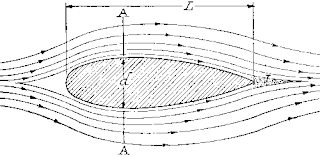Principles
behind Shuttlecock
Aerodynamic drag and
stability
Shuttlecock has a unique shape. The
feathers are very important to a shuttlecock. It is because the feathers impart
substantial drag. It cause the shuttlecock to decelerate greatly over distance.
Drag is a mechanical force that is generated by the
interaction of the solid body with the fluid. When a solid object travels
through a fluid at high velocities, it is acted upon by a drag force. The
deceleration characteristic of a shuttlecock in air is important because it is
needed to predict the path of the shuttlecock. One consequence of the shuttlecock's drag is that it requires
considerable skill to hit it the full length of the court, which is not the
case for most racket sports. The drag also influences the flight path of a
lifted (lobbed) shuttlecock: the parabola of its flight is heavily
skewed so that it falls at a steeper angle than it rises. With very high
serves, the shuttlecock may even fall vertically.
The distinct aerodynamic properties of
shuttlecocks are such that a shuttlecock always retains its stability and
always flies in the air or lands on the ground cork-first. It is extremely aerodynamically stable.
Shuttlecock Speed and
Characteristics
These badminton birdies are conical in shape and made up to 16
bird feathers which are overlapped and laced together by thin threads. One ends
of all these feathers are attached firmly together to a rounded cork located at
the base of the shuttlecock, giving the shuttlecock its beautiful flowery
shape, and aerodynamic properties. The cork is covered with a thin leather or
synthetic material.
Shuttlecock speeds are affected by weight and
weather conditions. When
shuttlecocks fly through the air on being hit, they are affected by breeze to a
large extent, and hence playing badminton outdoor in a strong breeze, becomes
quite difficult. They fly faster in higher altitudes and higher
temperatures. Due to
this reason, professional badminton is always played on indoor badminton
courts. Shuttle weights also vary from 4.75 to 5.50 grams.
Types of
Shuttlecocks
There are commonly 2 types of
shuttlecocks used by players. The professional players play with the feathered
shuttlecocks, while the casual or recreational players may be seen playing
badminton with the synthetic shuttlecock.
Feathered Shuttlecocks (Feathers):
Feathered Shuttlecocks are manufactured from the feathers
of only the left wings of geese or ducks. Manufacture of shuttlecocks from the
feathers of ducks is quite common. A feathered shuttlecock is very light in
weight and weighs only around 4.75 to 5.50 grams. Shuttles have 14-16 feathers
with each feather 70mm in length. The cork diameter (base diameter) is 25-28mm
and the diameter of the circle that the feathers make (the top diameter) is
around 54mm.
Feather shuttlecocks are extremely fragile and don’t last
for many rounds. However, expert badminton players claim that feathers are
easier to control and put less strain on the shoulder, since they don’t need to
be hit quite as hard with the racquet. Olympic badminton competitions are
played with machine-tested feather shuttlecocks of the highest quality. Duck
feathers are sometimes used, but they dry out faster and break more easily than goose
feathers.
In
tournament only feather shuttlecocks used because only it poses lower drag
coefficient at low speeds and significantly high value at high speeds. Professionals
prize the "feathered" shuttlecocks because they are capable of rapid
acceleration and deceleration - that is to say, they can get up to very high
speeds (200 mph is not unusual), but they also tend to fall rather slowly,
buying the person on the receiving end a bit more time.
Synthetic Shuttlecocks
(Plastics):
Synthetic nylon shuttlecocks
are also manufactured but generally badminton players everywhere like the touch
and feel of the feather shuttlecocks rather than the synthetic ones. The main
advantage of the synthetic shuttlecocks is that they last much longer than
their feathery counterparts, and hence are more cost-effective for the players
who play for recreational purposes only and cannot afford the price of feather
shuttles.
The synthetic shuttlecock has different
aerodynamic characteristics, but is far more durable .This type of shuttlecocks,
by contrast, cannot move as quickly, but tend to be far better at maintaining
whatever speed they gain




5 November 2014 at 21:02
Thanks good info I notice that the flight of some shuttlecocks take a curved path How does one correct that At times a whole box of brand new shuttles has this problem The shuttles don't seem to look physically deficient look forward to your response